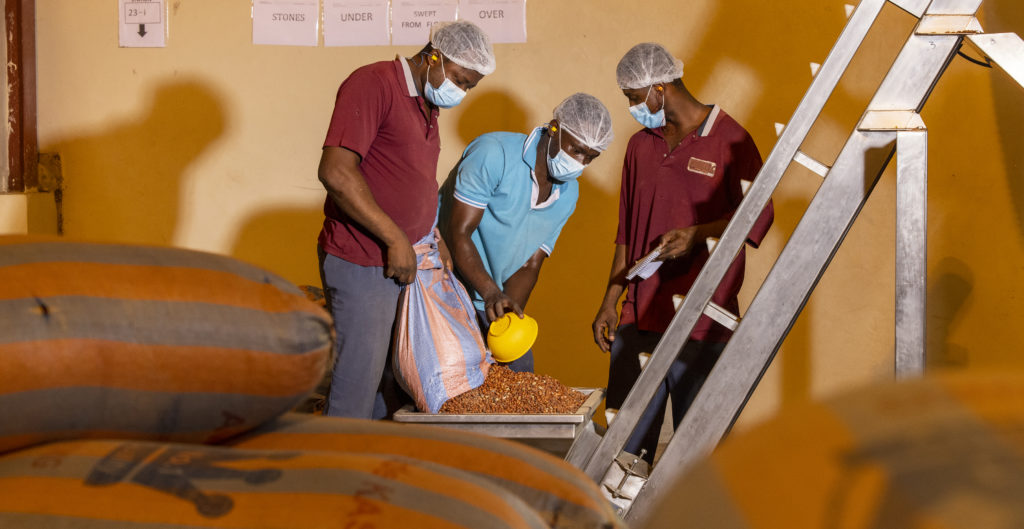All nut processors should have a program for suppliers to follow. This program should cover how raw product is monitored and tracked to ensure that it meets safety and specification requirements. For peanuts, this may mean that the supplier must show how nuts were sorted to remove rocks and other debris and how each batch was tested for aflatoxin.

Raw materials should be protected from pests, extraneous materials, and undesirable microorganisms. They should be inspected or tested to make sure that the material is suitable for your process. They should be stored and handled in a way that prevents contamination or deterioration. All materials should be properly labelled to prevent contamination, allergen cross-contact and deterioration.
Processors need to have an effective program to trace all ingredients that are used and finished products that are produced. Processors should have the ability to trace one step back and one step forward in the supply chain.
Processors should have a program that clearly documents how and when raw materials are inspected and tested as they arrive. The program should identify when raw or partially processed materials that don’t meet standards should be put aside to determine whether to use or dispose of them. Procedures should describe clearly who is responsible for each step in deciding whether to hold, release or dispose of materials. Records should document these steps and identify clearly the status of materials.
When a product is on hold, records should indicate why and what action, such as further testing or inspection, is necessary. Besides “on hold,” other statuses might be “rework” or “destroy.” The material itself should be clearly marked with its status; product that is on hold should be segregated from released product.
The program should include procedures for inspecting and testing non-conforming raw materials, for work-in-progress materials and for reworking pending inspection or testing, for materials pending Certificate of Analysis (COA) verification, and for non-conforming packaging or labels.
GMPs for Peanut
Nut processors should assure that they can trace a product back to the supplier.
Raw peanuts should be evaluated to determine if pesticide residues comply with established standards.
Raw peanut facilities should have a pest control program; only trained personnel should apply pesticides and those chemicals should be approved for use.
Rodent bait stations should only be installed outside of buildings at about 50 feet (15 meter) intervals and routinely monitored.
Raw peanuts should only be stored in cold and dry warehouses. The temperature for stored shelled peanuts should be 55°F (13°C) or less and the relative humidity should be 65%. Do not store for more than a few days at temperatures above 60° F. (16°)
Raw peanuts should not be stored in the same room with other products that have an odor. Even faint odors can be absorbed by peanuts and affect flavors.
Raw peanuts should not be stored in the same space with other food products to prevent the potential for food allergy cross contamination.
A process should be followed to remove foreign material from peanut stock.

